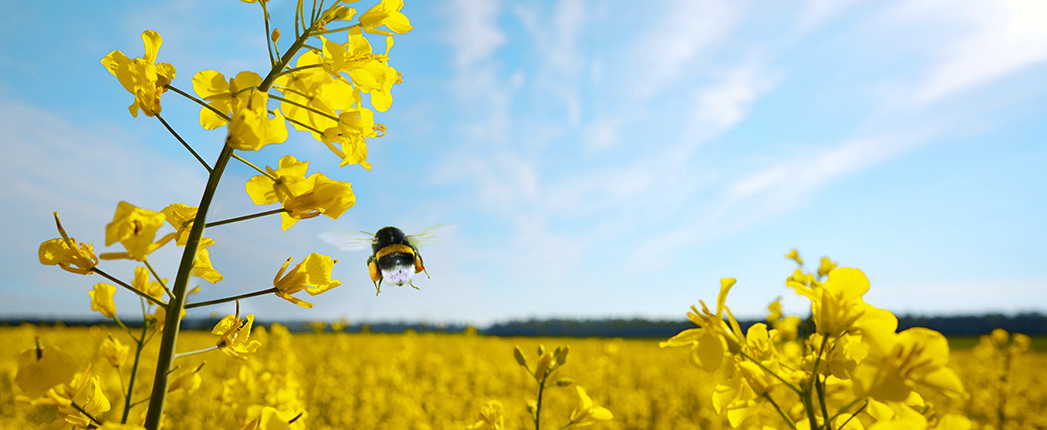
Despite setbacks from the pandemic, demand for bio-lubricants should continue to grow faster than the overall global lubricants market, an analyst said during a July 30 webinar.
“Bio-lubricants, as any other type of economic and industrial activity, have been heavily impacted by the effects of COVID-19,” said Sharbel Luzuriaga, a Prague-based project manager for Kline & Co.. The pandemic will have a “dramatic negative effect on 2020,” and demand for bio-lubricants in the leading country markets covered in Kline’s most recent study will contract by 20%.
However, “we are pretty optimistic about the bio-lubricants market,” Luzuriaga continued. Growth is forecast to resume in 2021 and continue through 2024. In the most likely of three scenarios, the Parsippany, New Jersey-based consultancy anticipates that bio-lubes will enjoy a 3.5% compound annual growth rate from 2019 to 2024. The worst-case scenario predicts a 1.6% growth rate, if adverse economic effects of the pandemic enhance consumers’ price sensitivity.
In past reports, Kline had estimated double-digit growth, but Luzuriaga emphasized that the average growth rate for bio-lubes is still well above the overall industry, which is likely to contract.
While there is no formal consensus in the industry on the definition of bio-lubricants, and regulatory parameters vary, Kline defines these products as being readily biodegradable – breaking down at least 60% within 28 days – renewable, or containing at least 25% bio-sourced carbon, and non-toxic.
In the market at large, Luzuriaga said, many different aspects of what may define bio-lubricants are converging into a cradle-to-grave approach focused on sustainability. “Sustainability is defined by the socio-economic benefits of using the products: low energy consumption, prolonged machine life, occupational safety, reduced carbon footprint and other principles,” he explained.
According to Kline’s report, the global finished lubricants market in 2019 was 40.5 million tons, of which bio-lubricants accounted for less than 1% at 350,000 tons. Europe was the second-largest market by volume, following North America. Together these two regions consume three-quarters of the world’s bio-lubes, driven by strict environmental policies.
Europe has achieved the highest penetration of bio-lubes. Germany is the largest country market within the region, followed by the Nordic countries, which have the highest demand per capita. Just over 5% of Nordic countries’ overall lubricant demand is for bio-lubes. For Germany that number is nearly 4%, followed by France at about 2.5% and Italy and the United Kingdom at just over 2% each.
The Nordic countries and France are among the fastest-growing markets for bio-lubes, growing at cumulative annual rates of about 6% and 4%, respectively. Italy, Germany and the U.K. hover around 3%.
Globally, penetration of bio-lubricants is higher in the industrial segment than for automotive applications, with hydraulic fluids making up the largest portion, followed by metalworking fluids, transformer oils and chainsaw oils.
Germany and the Nordic countries use the highest percentage of commercial automotive bio-lubricants, and along with France, Italy and the U.K. also have greater demand in the consumer automotive segment than other countries.
European bio-lubricant demand is largely motivated by regulatory compliance and financial incentives, environmental awareness and occupational health concerns, Luzuriaga said. The transition to renewable energy is also a key driver, with applications such as hydro-electric plants and wind turbines building demand for hydraulic fluid, turbine and circulating oils, and gear and bearing oils. Construction is also contributing to demand for biobased hydraulic fluid, greases and concrete releasers.
Kline is still analyzing the long-term effects of the pandemic, Luzuriaga said, focusing on three market drivers: regulatory mandates, lubricant performance and cost.
“There is increased pressure in some regions for governments to postpone or cancel some environmental legislation that was scheduled to be enforced in the next two years,” he noted.
In terms of improving performance, pandemic-motivated lockdowns have prevented research and development efforts from progressing, as researchers are unable to access their laboratories. “This area has been widely affected,” Luzuriaga said, adding that investment in R&D has been cut to reduce costs, and new development programs with customers were put on hold.
Bio-lubricants’ cost-competitiveness has also taken a hit, as the recent decline in crude oil demand has lowered mineral base stock prices, widening the price gap between the two. In response, some biobased base stock suppliers have redirected their focus to potential growth opportunities in low-volume, high-margin markets such as cosmetics and toiletries, he said.
In the medium term, however, increased availability of high quality biobased base stocks, positive public opinion and continued regulations will spur growth for bio-lubricants. Technical demand, corporate social responsibility initiatives and a desire to optimize operating costs will “converge on a favorable performance-to-cost ratio and help to change risk aversity,” Luzuriaga predicted.
The top 10 players in the bio-lubes market account for 70% of production, and all have educational initiatives to increase awareness among end users, he noted. Each of the global oil majors has an environmentally acceptable lubricant product line, and Luzuriaga said these companies are intensifying efforts to develop and extend their own technology through investments or strategic alliances.
Unlike other areas of the lubricants industry, there is little merger and acquisition activity related to bio-lubes. Instead, companies invest in partnerships that facilitate collaboration and share costs for licensing and technology advancements.
Independent producers with bio-lube lines, such as Quaker Houghton, Fuchs and Valvoline, are all reputable producers that can capitalize on their high standards of technical excellence, Luzuriaga observed. Dedicated bio-lubes producers are building relationships with equipment manufacturers. All of these factors will contribute to bio-lubes’ growth.
While regulations will not be enough to keep momentum, Kline has seen both private and public stakeholders looking for ways to cooperate to overcome some of the main obstacles that bio-lubes face. Plenty of opportunities for expanded demand exist, considering these lubricants’ low penetration in most markets. The study, published in July, is entitled “Bio-Lubricants: Market Analysis and Opportunities,” and includes regional coverage for the Americas, Europe and Asia.